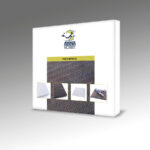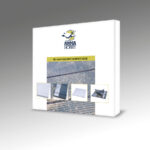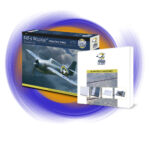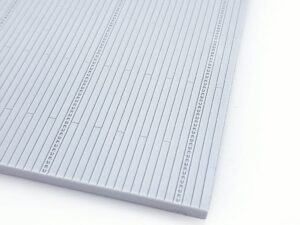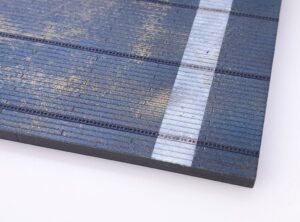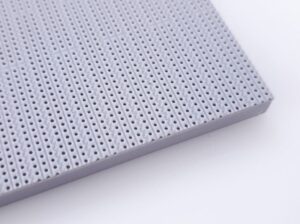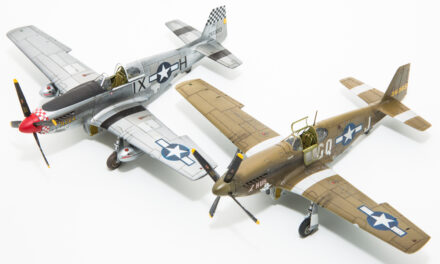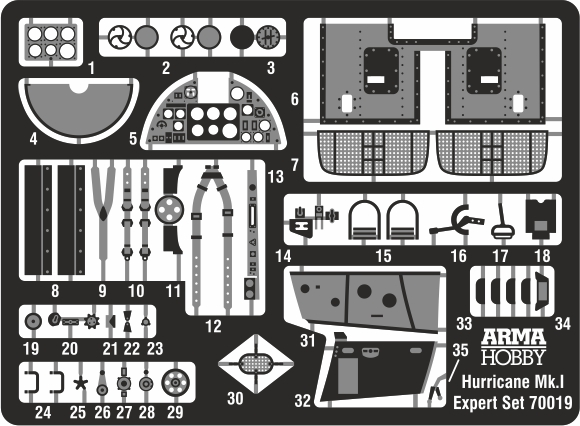
In September, we offer a dose of three novelties from Arma Hobby in 1/72 scale: one aircraft and two plastic model bases. Where did the idea for such sets come from? After the FM-1/FM-2 Wildcat Deluxe Set sold out, you often asked about the included plywood bases with deck for the aircraft carrier. We thought about it a few times, and finally decided to release such a kit in plastic. Plywood was not suitable for larger production runs, whereas plastic works well here. And if we’re making bases for naval planes, there can be no shortage of offerings for land-based machines – the obvious choice here is an airfield surface hardened with PSP steel mats. And what about the aircraft? It’s the well-known and well-liked Wildcat F4F-4 in Operation Torch striking American and British schemes, with markings in distinctive yellow outlines. Looks great on the carrier deck base!
Pre-order in promotional bundles
From now until the end of September, we are offering pre-order with discount for promotional bundles including the latest kits at good prices: both bases and the Wildcat ‘Operation Torch’ model kit. The bases can also be purchased separately and in bundles with other matching model kit.
- Check and order promotional bundles online at Armahobby.com!
Allied Escort Aircraft Carrier Deck
Escort aircraft carriers, although smaller and less heavily armed than the ‘real’ fleet aircraft carriers, played no less a decisive role in the Second World War at sea. Thanks to their mass production (some 130 were built!), they helped win the Battle of the Atlantic against German u-boats, and in the Pacific they provided strong air support for Marines’ landing operations on subsequent islands, both fighter cover and assault operations against ground targets.
The universal and impressive 1/72nd scale plastic base for aeroplane model accurately reproduces a section of the deck of an escort aircraft carrier of any of the basic classes of US WWII production, used en masse, including by Britain, in the Atlantic, Pacific, Indian Ocean, Mediterranean and Arctic convoys.
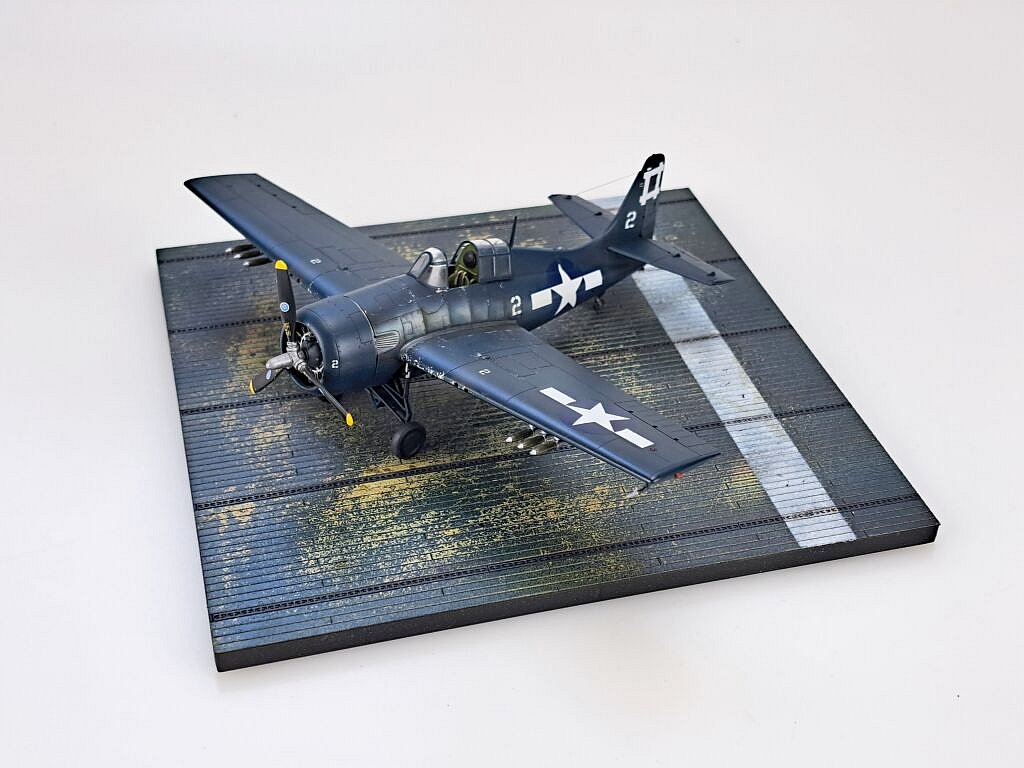
Included is a link to a free download of files for self-printing on a 3D printer accessory parts: arrester cable mounts, different versions of wheel chocks, lamp covers and a bomb carriage. Once painted and possibly accompanied by pilot and crew figures, it makes an attractive and easy-to-make diorama for models of many types of aeroplanes.

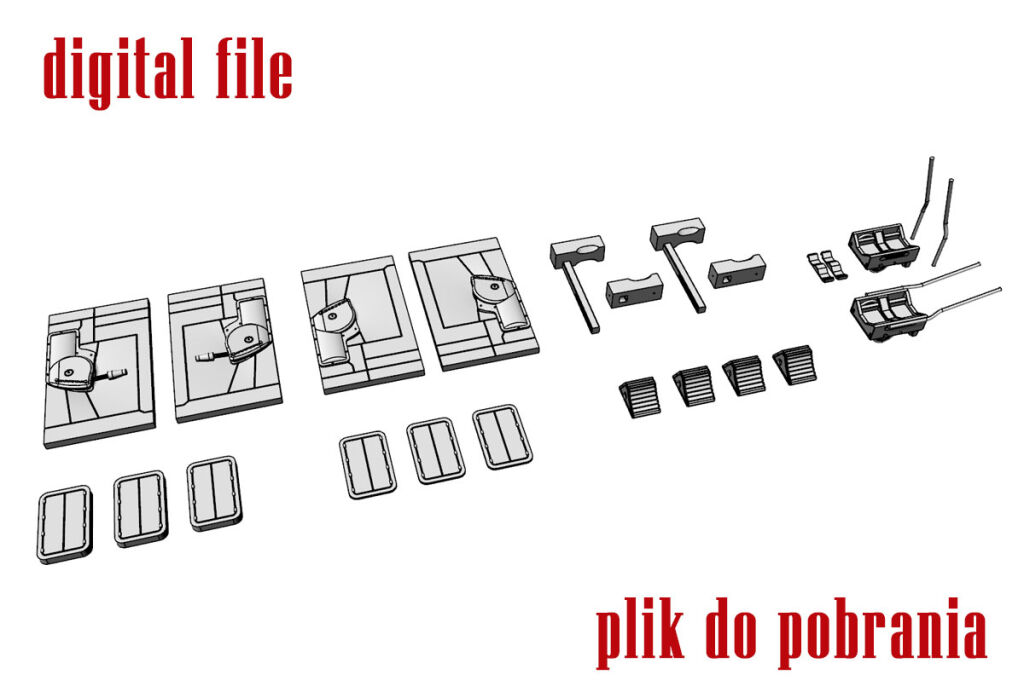
PSP Airfield
The famous PSP stands for Pierced Steel Planking, also known as Marston Mat, used to reinforce the surface of airfields with perforated steel mats. They were mass-produced in the USA from the beginning of the Second World War and used in all theatres of war wherever the American air force appeared: in the Pacific, Europe, Africa and even Greenland!
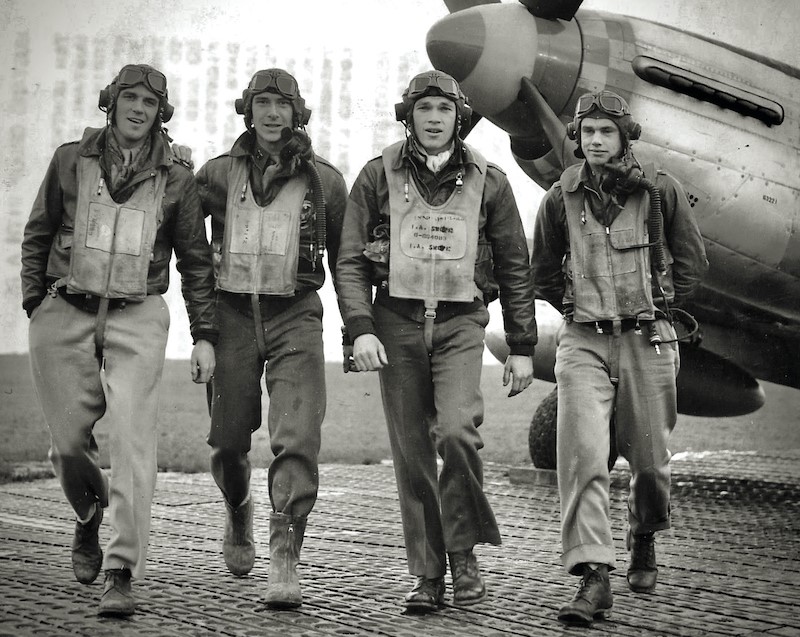
A universal and impressive 1/72 scale plastic base for aircraft model accurately reproducing the airfield surface covered with PSP (‘Marston Mat’) mats is suitable for all types of smaller American aircraft in all theatres of operations of World War II and some later conflicts, as well as most aircraft of many other Allied air forces.

The crisp surface texture facilitates the use of various modelling techniques. To each base we add a link to free files for self-printing on a 3D printer with universal airfield equipment: fire extinguisher, toolboxes, fuel barrels, British ‘flimsy’ fuel cans, wheel chocks and wooden trestle. It is left to the modeller’s creativity to make further additions to the small diorama, decide for yourself!

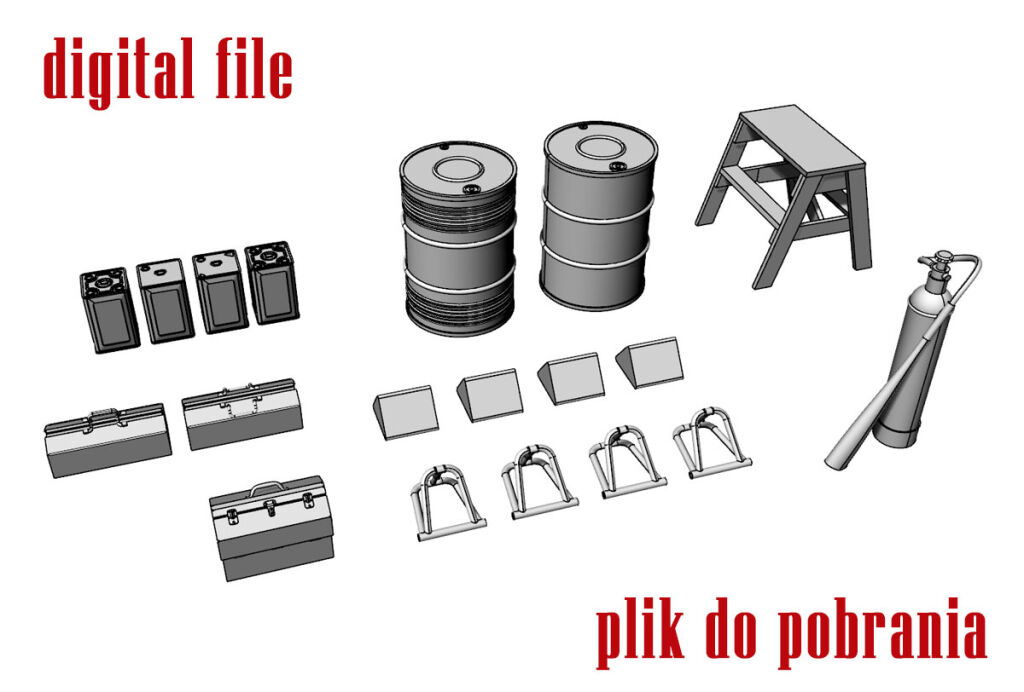
F4F-4 Wildcat “Operation Torch”
The Grumman F4F-4 Wildcat was one of the main carrier-based fighters used by the US Navy and Royal Navy during the Second World War. It was referred to as the Martlet II by the British. During Operation Torch in November 1942, Wildcats stationed on US and British aircraft carriers supported the landing of Allied forces in North Africa. These aircraft wore US stars with yellow outlines on the fuselage and wings, British aircraft as well. The idea was quick identification, but also to neutralise the resentment of the French towards the British.
After the operation, American carriers with Wildcats moved to the Pacific. The yellow markings from Operation Torch were then painted over with a camouflage colour. British aircraft were quickly repainted with regulation roundels.
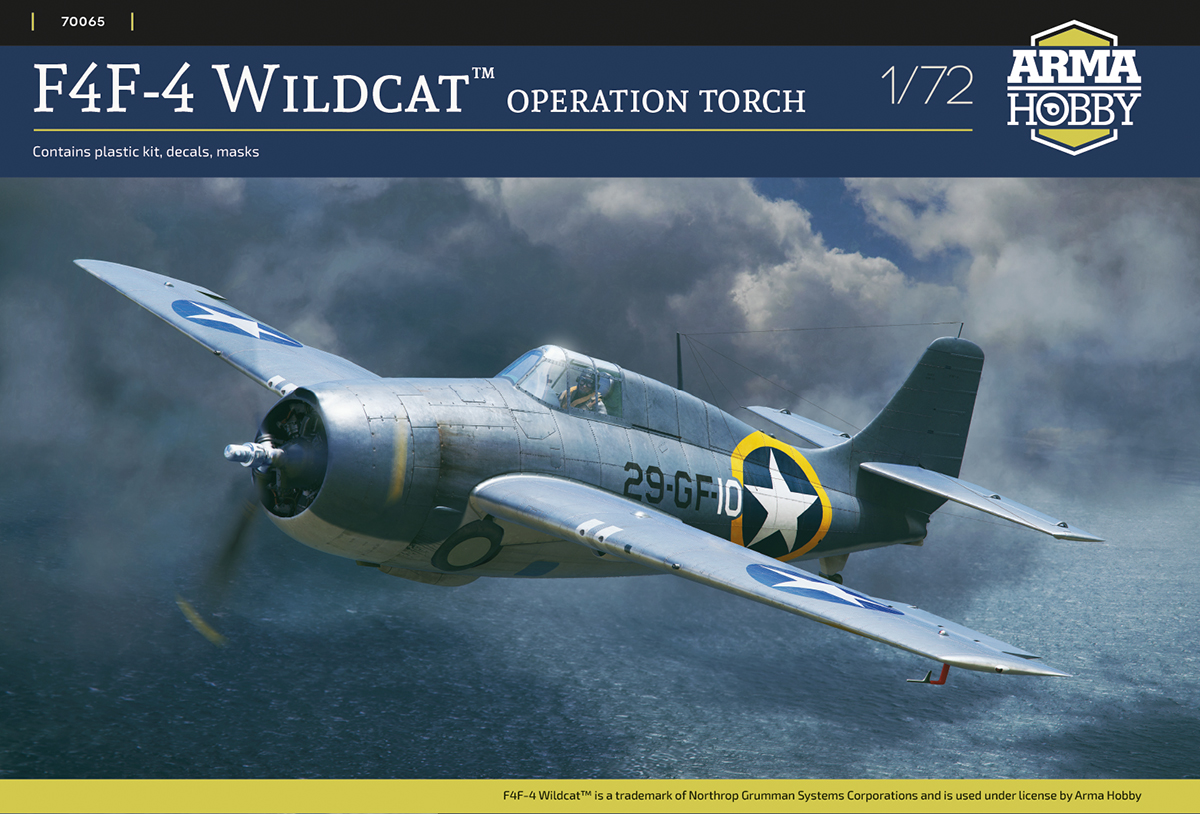
The F4F-4 Wildcat “Operation Torch” 1/72 kit includes three historical markings.

- F4F-4 Wildcat, “3512/29-GF-10”, squadron VGF-29, USS Santee, Operation Torch, November 1942
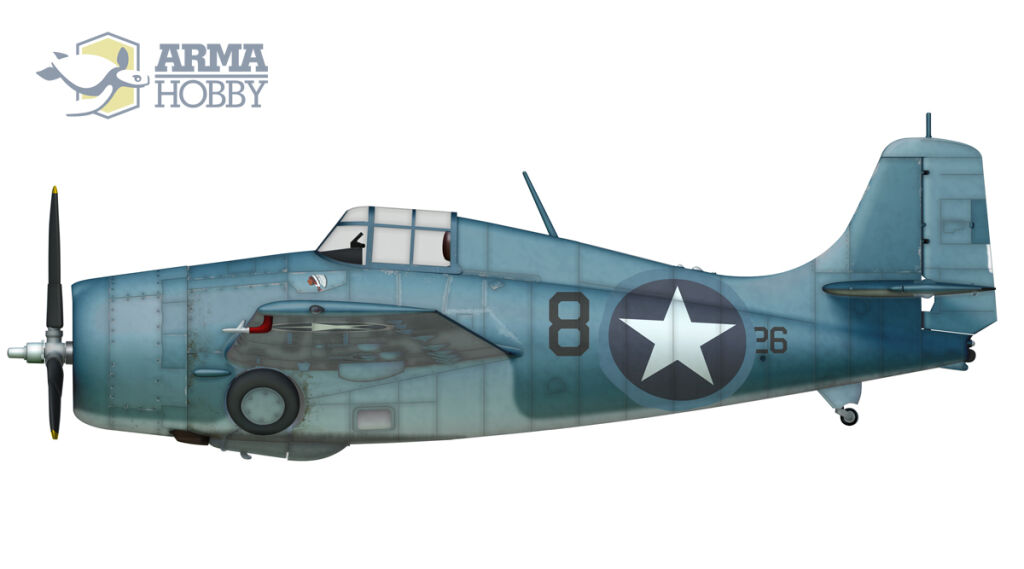
- F4F-4 Wildcat, “8-26”, squadron VGF-27, Guadalcanal, April 1943
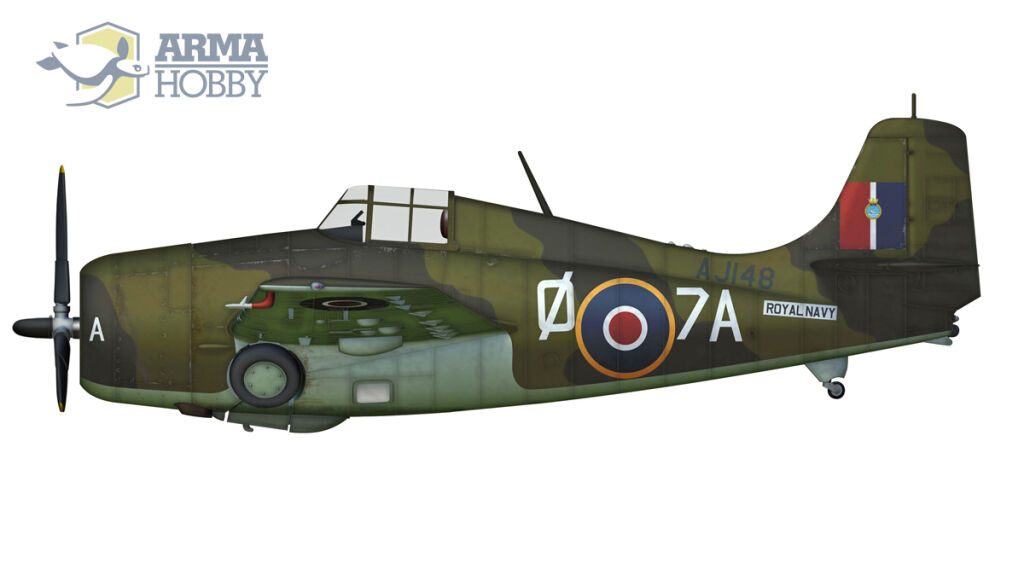
- Martlet II, “AJ148 / Ø-7A”, No. 888 FAA Squadron from HMS Formidable carrier, Oran, Algeria, December 1942.
We prepared promotional pre-order for kits with good discounts. See the bundles below and order – shipments before the end of September!
- Check and order promotional bundles online at Armahobby.com!
Check also:
Modeller, son and father of a modeller. Loves digging through references and analysing old photographs. He builds aircraft, ship and vehicle models, the older the better. He has a weakness for Polish equipment, but does not despise the RAF, FAA and Great War topics. A journalist by training.
This post is also available in:
 polski
polski



